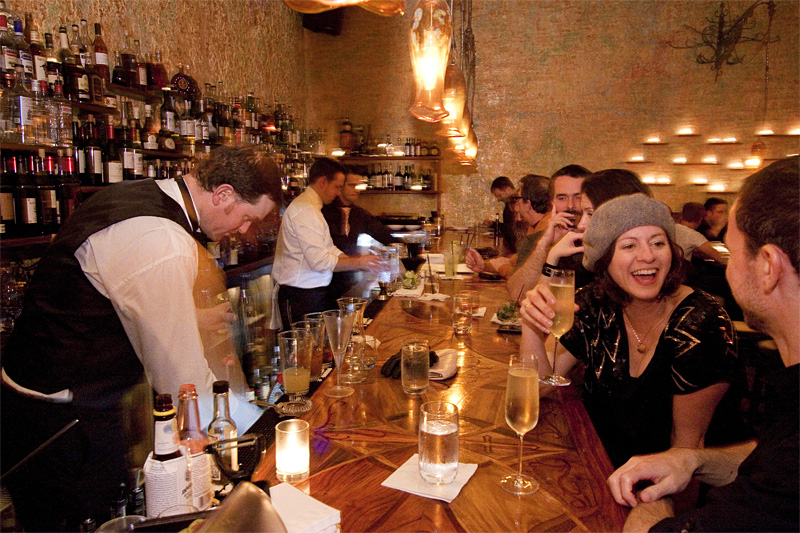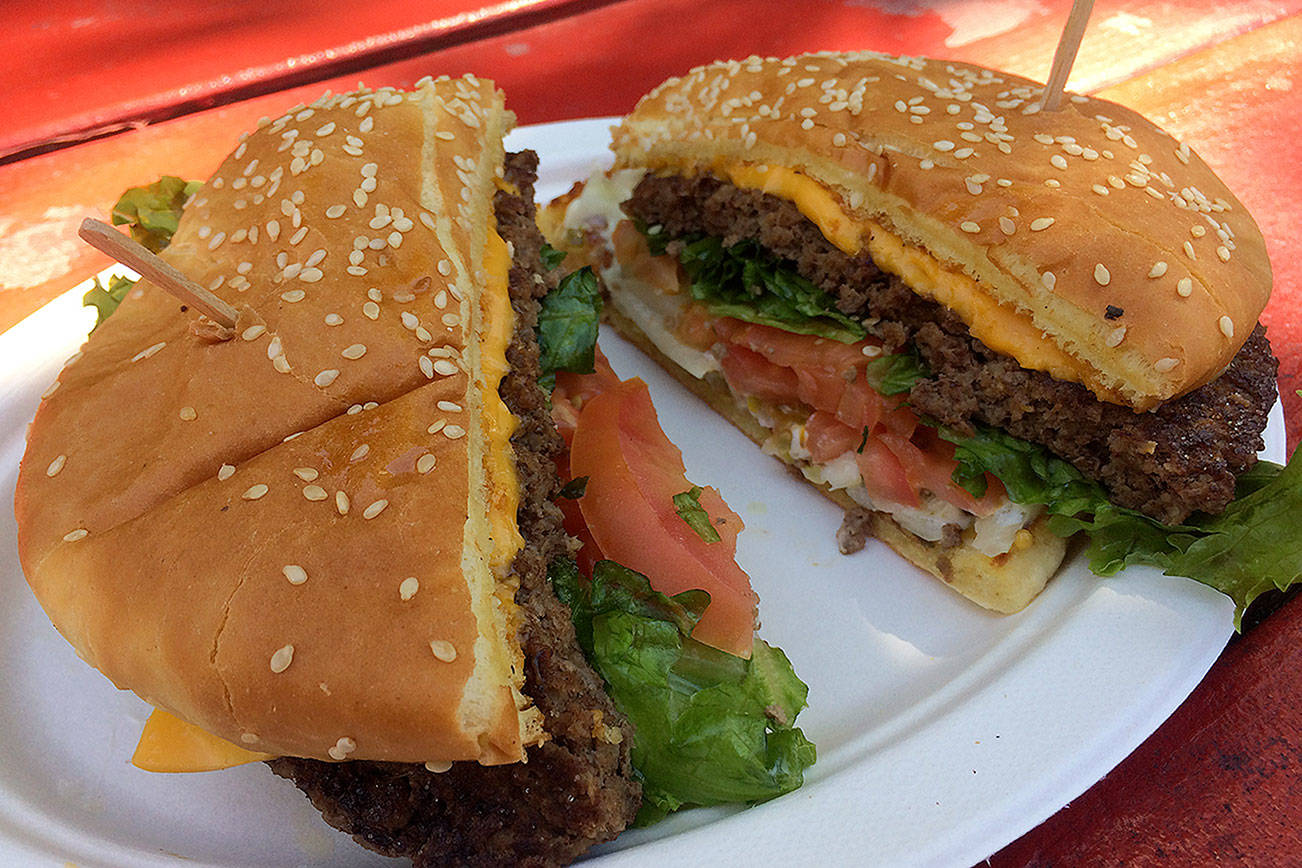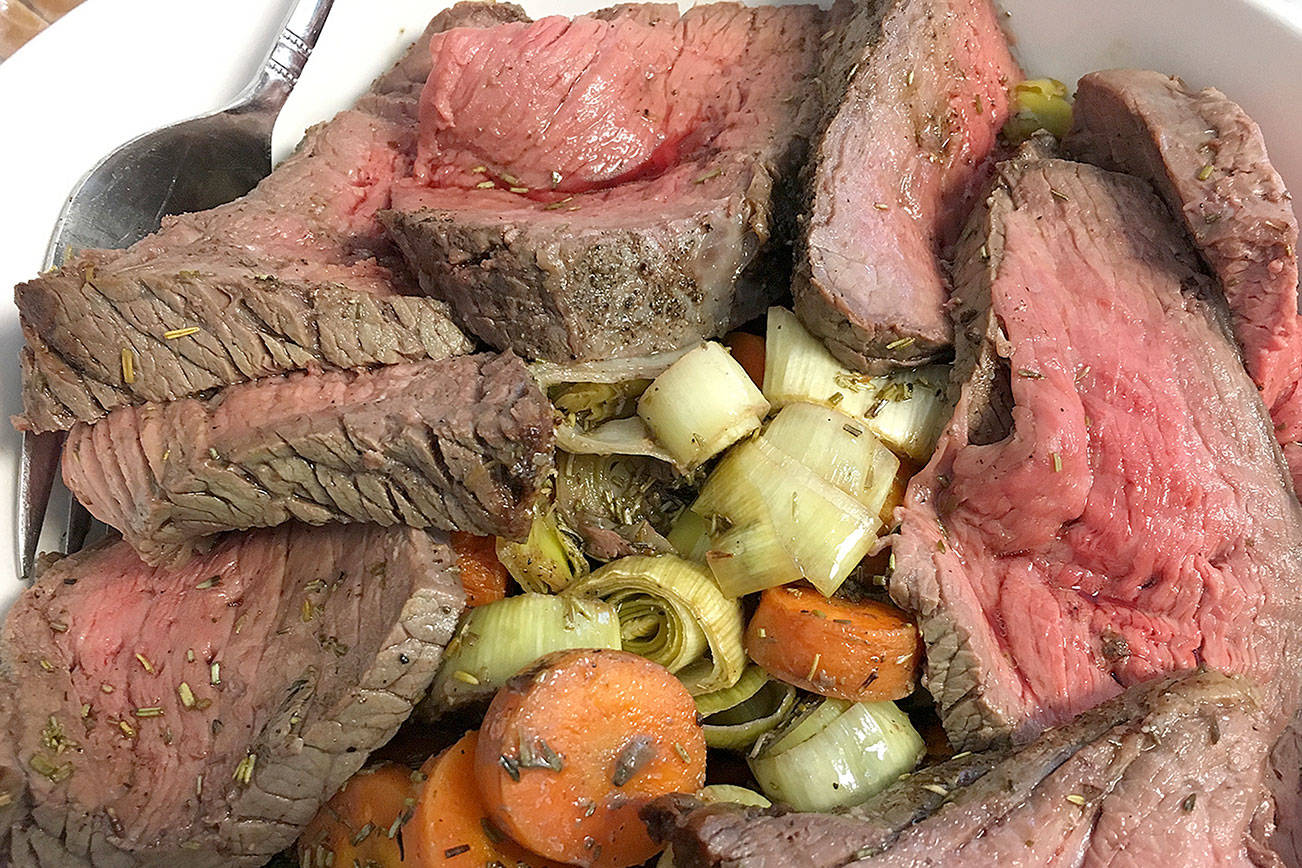Seattle’s food scene is so active that I rarely get a chance to re- review places. Two high-profile restaurants, though, pulled off chef changes that were risky—or sensationalistic—enough to merit attention.
In re sensationalistic, the management of the Hunt Club, the 29-year-old restaurant at the Sorrento Hotel, played it smart when they launched a Top Chef–style competition to pick their next chef. There were weekly benefit dinners to try out four semifinalists, followed by a live cookoff at the Seattle Culinary Academy. The competition attracted a lot of curiosity, and the pictures that finals judge, and Seattle Times food blogger, Nancy Leson took of winner Matthew Mina’s corn cappuccino and flat-iron steak with bone-marrow risotto advertised his menu better than a half-dozen press releases could.
As anyone who’s tried to impress a date with a fireside cocktail knows, the Sorrento’s bar and restaurant are wintertime retreats. That may be why we seemed to catch the staff by surprise. The black-shirted waiters, in fact, seemed so accustomed to hotel guests and gawkers stopping by to admire the moody Victorian woodwork and ornately patterned carpet that it took a minute for them to register that we were, in fact, interested in dining there, yes, for a sit-down meal, and yes, in the dining room. Scrambling ensued.
Mina moved to the Puget Sound area after working in San Francisco as a pastry chef and the sous chef of a few Asian-fusion restaurants, and so I was surprised to see that the menu read so simple and seasonal: baby beets with goat cheese and frisee, flat-iron steak with yukon gold puree and chard. Remembering the chef’s prize-winning dishes, I thought perhaps he was writing coyly, and had a truckload of surprises to sneak into each dish.
No.
A “duck breast with risotto and pea sprouts” contained exactly that and not a whit more: properly pink-hearted slices of meat fanned out over three pea shoots (OK, maybe five) and a gummy-chalky risotto with some kind of bland cheese half-melted into the rice. Similar story with pork belly over chorizo mac ‘n’ cheese: Pale greyish-pink meat had been braised in what seemed like water—the belly tasted of, well, pork, instead of some rich braising stock—and the sausage-spiked pasta managed, paradoxically, to be both bland and salty. Mina’s heirloom tomato salad—it was June, after all—was the exact same salad we were all cooking a decade ago, only more clumsily wrought: giant three-bite chunks of tomatoes, ranging from pale yellow to crimson, that were unsalted, barely dressed, and topped with a few microgreens. The plate was ringed with dark-brown strings of a syrupy balsamic vinegar reduction. “It tastes like fish sauce,” complained my tablemate after a bite. I drew a tine through the sauce and tasted it. No, just burned. Disgusting.
The only two dishes that might have gotten Mina past the judges’ table after this elimination round involved seafood: An appetizer of two sea scallops, only slightly overcooked, rested on concentric pools of an exquisitely velvety cauliflower puree, sweetened with golden raisins, and a veal stock reduction sauce whose meatiness melted into the cauliflower. And his butterflied, pan-fried trout was a classic cooking-school dish classically rendered, the mild fish napped in a classic lemon and brown-butter sauce spiked with almonds and pancetta.
Was this an off night, or did the hotel itself sap the creativity so on display in the chef’s competition dishes? (The larger question, of course: Is a good Top Chef competitor really a top chef?) Right now the Hunt Club is serving hotel food, and for $60–$80 a person, restaurant-goers don’t have to pay for that dubious privilege.
One of the riskiest business decisions restaurateurs make is to take over a working restaurant and assume they can carry on its good name. Nine times out of 10, they’d be better off just buying the equipment and starting over. Customers get devoted to certain restaurants for the funniest of reasons—the sauce on a particular fish, the fact that they can bring friends for dinner and shake hands with the chef when they walk in. When I read that Matt Janke was selling Matt’s in the Market, the restaurant that convinced me to move to Seattle (my job interview took place there), I put the restaurant on deathwatch. However, tales quickly filtered back to me that the food hadn’t gone downhill. And market fishmonger Dan Bugge, the new owner, certainly took the right steps, working with Janke for six months pre-transition, then hiring chef Chester Gerl, a sous at Brasa, one of my favorite Seattle restaurants. Finally, I stopped in for lunch, and the oyster po’boy was as good as I remembered. It was time to attempt dinner.
Gerl continues Janke’s original mission to use the fish, meat, and produce of the market around him, and the new chef’s years at Brasa are evident in the menu’s Spanish cast: The clams steamed with cava, shallots, and tomatoes, little chunks of chorizo adding their paprika-infused funk to the bowl. A bouquet of creamy-centered grilled octopus tentacles, the tentacles blackened and a little crispy, laid over a smooth, sweet romesco sauce doused with smoked paprika.
The small plates weren’t really so small—I’ve mixed double batches of cookies in bowls as big as the one the clams were served in. They were followed by equally giant entrées. A pair of large lamb chops—medium rare, missing only the rush of salt on their browned crusts—hovered over a bright-green pool of salsa verde (a parsley-shallot pesto), held up by baseball-sized roasted red-skinned potatoes. A fillet of wild King salmon levitated over a shopping bag’s worth of vegetables: blanched cauliflower, crisp-tender green beans, silky braised fennel, fluted arugula leaves. Unfortunately, though, the dish failed. The salmon was raw at the center, the vegetables didn’t pick up much flavor from the tepid vinaigrette dressing, and the salmon was sauced with a salsa of green olives and Rainier cherries, a jarring combination of pungent and sweet. But the seared scallops were the perfect expression of what Matt’s does well: The fat, satin-centered mollusks were set on a puree of English peas braised with aromatics in a rich stock—the early-summer scent of peas simply announced the beginning of the puree’s rich flavor, not the middle and end as well. And on the scallops, a cascade of anise-tinged shaved fennel. It was subtle with no hint of blandness, ingredient-dependent yet carefully curated.
If the food has, by and large, remained excellent, what has changed are the prices. They spiked after Janke doubled the size of his original restaurant in 2007 and have only risen under Bugge’s management. Two of our entrées approached or crested the $40 mark, and for me, that’s a watershed number, the point at which my expectations shift. Forty bucks means that robust, farm-centric food isn’t enough; I expect all the little flourishes and tiny, exquisite detailing that Lampreia and Rover’s put into their dishes. Forty bucks is the realm of haute cuisine, and while Gerl’s food is lovely and generous, haute cuisine it’s not. Pardon me for sounding like your grandmother, but $40 entrees ($8 worth of tips alone) also means that I expect the waiters to dress better than I do, not wear thrift-store oxfords with ties sloppily half-knotted around the open collars. Matt’s has been able to rely on a steady tourist crowd to pay off the renovation costs, but given the recession, and the half-empty dining room in late June, I’d suggest Bugge bring the entrée prices down $5–$10, and watch if the locals won’t flood back into the dining room.
Price CheckHunt Club: Pork belly: $26 Duck breast: $28Matt’s in the Market: Tomato salad: $10 Clams w/chorizo: $15 Scallops: $33 Salmon: $42






